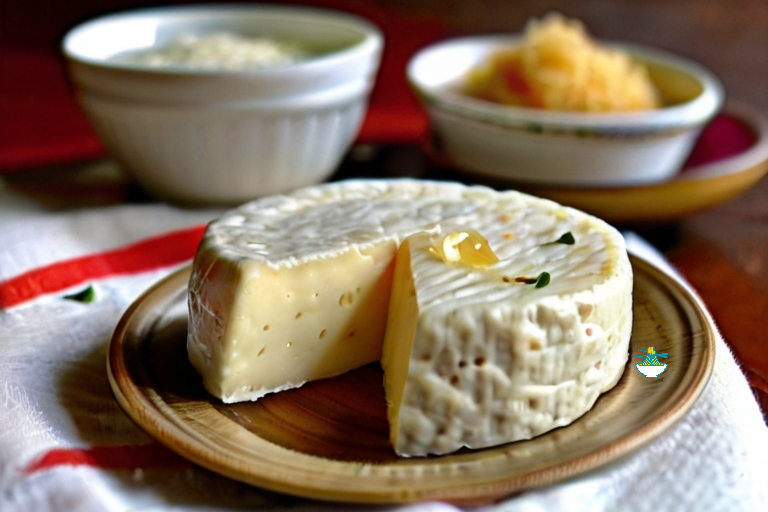Embark on a journey to discover the hidden gem of Eritrea - the captivating Taita region. Nestled in the heart of this East African nation, Taita offers a mesmerizing blend of natural wonders, rich cultural heritage, and vibrant community life. Traverse through rugged landscapes adorned with lush vegetation, where winding trails lead to breathtaking vistas overlooking the valleys below. Immerse yourself in the warmth of Taita's people, known for their hospitality and unwavering sense of unity. Explore ancient ruins that whisper tales of a bygone era, and witness traditional ceremonies that have withstood the test of time. Whether you're a nature enthusiast, history buff, or simply seeking an authentic cultural experience, Taita promises to leave an indelible mark on your soul. Join us as we unravel the mysteries and unveil the splendor of Eritrea's Taita region.
Ingredients:
- 1 gallon whole milk
- 1/4 cup white vinegar or lemon juice
- 1 teaspoon salt
- Honey, for serving

Instructions:
1- Heat the milk: Pour the whole milk into a large, heavy-bottomed pot and place it over medium heat. Stir occasionally to prevent the milk from scorching. Heat the milk until it reaches just below boiling point, around 180°F (82°C). Remove from heat.
2- Add the vinegar: Slowly pour in the white vinegar or lemon juice while stirring the milk gently. Continue stirring for a few minutes to ensure the vinegar is evenly distributed.
3- Let the curds form: Allow the milk to sit undisturbed for about 10-15 minutes. During this time, curds will begin to form as the milk separates into curds (solid) and whey (liquid).
4- Drain the curds: Line a large colander or sieve with cheesecloth or a clean kitchen towel, and place it over a sink or a large bowl. Carefully pour the curdled milk through the lined colander, allowing the whey to drain away. Gently press down on the curds to release any excess liquid.
5- Rinse the curds: Rinse the curds under cold water to remove any residual vinegar taste. Gently squeeze the cheesecloth to remove excess moisture.
6- Season the cheese: Transfer the drained curds to a mixing bowl and sprinkle them with salt. Gently toss to evenly distribute the salt throughout the cheese.
7- Serve with honey: Eritrean Taita is traditionally served with honey as a sweet accompaniment. Spoon the homemade cottage cheese into serving bowls and drizzle with honey to taste.
8- Enjoy: Serve the Eritrean Taita immediately as a side dish or a light snack. Store any leftovers in an airtight container in the refrigerator for up to a week.
Nutritional Values:
Here are approximate nutritional values for the main ingredients used in making Eritrean Taita:
Whole Milk (per 1 cup, about 244g):
- Calories: 149
- Protein: 7.7g
- Fat: 7.9g
- Carbohydrates: 11.7g
- Calcium: 276mg
- Vitamin D: 120 IU
benefits:
- Excellent source of protein, essential for building and repairing tissues.
- Rich in calcium, promoting bone health and muscle function.
- Contains vitamin D, important for calcium absorption and bone strength.
- Provides fats for energy and satiety.
White Vinegar (per 1 tablespoon, about 14.9g):
- Calories: 3
- Protein: 0g
- Fat: 0g
- Carbohydrates: 0.1g
benefits:
- Acts as a coagulant in cheese-making, helping to separate the curds and whey.
- Adds a tangy flavor to the cheese.
- Can aid in digestion when consumed in moderation.
Salt (per 1 teaspoon, about 6g):
- Calories: 0
- Protein: 0g
- Fat: 0g
- Carbohydrates: 0g
- Sodium: 2325mg
benefits:
- Enhances the flavor of the cheese.
- Acts as a preservative, helping to extend the shelf life of the cheese.
- Regulates fluid balance and nerve function in the body.
- Provides essential minerals like sodium and chloride.
These values are approximate and may vary based on the specific brand and type of ingredients used. Additionally, the nutritional values for honey, which is used as a serving accompaniment, are not included here as they can vary greatly depending on the type and source of honey.


Comments